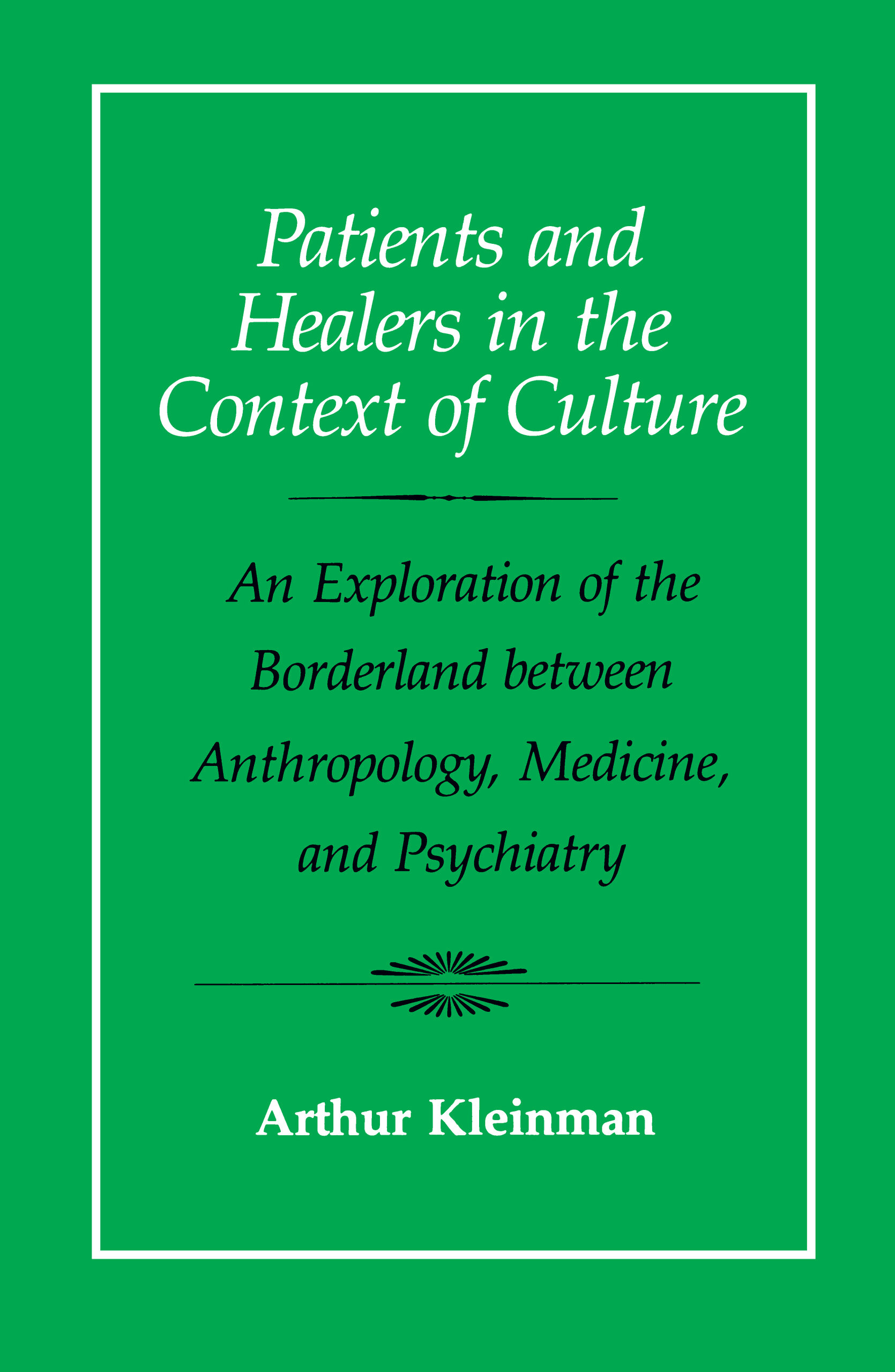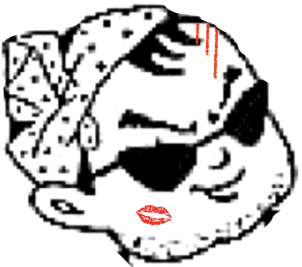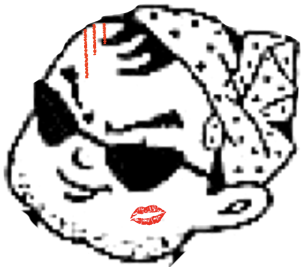
文化の文脈における患者と治療者
Patients and Healers in the Context of
Culture: An Exploration of the Borderland between Anthropology,
Medicine, and Psychiatry

☆ Arthur Kleinman, Patients and Healers in the Context of Culture: An Exploration of the Borderland between Anthropology, Medicine, and Psychiatry, 1981.
| From
the Preface, by Arthur Kleinman: Patients and Healers in
the Context of
Culture presents a theoretical framework for studying the
relationship
between medicine, psychiatry, and culture. That framework is
principally illustrated by materials gathered in field research in
Taiwan and, to a lesser extent, from materials gathered in similar
research in Boston. The reader will find this book contains a
dialectical tension between two reciprocally related orientations: it
is both a cross-cultural (largely anthropological) perspective on the
essential components of clinical care and a clinical perspective on
anthropological studies of medicine and psychiatry. That dialectic is
embodied in my own academic training and professional life, so that
this book is a personal statement. I am a psychiatrist
trained in anthropology. I have worked in library, field, and clinic on
problems concerning medicine and psychiatry in Chinese culture. I teach
cross-cultural psychiatry and medical anthropology, but I also practice
and teach consultation psychiatry and take a clinical approach to my
major cross-cultural teaching and research involvements. The
theoretical framework elaborated in this book has been applied to all
of those areas; in turn, they are used to illustrate the theory. Both
the theory and its application embody the same dialectic. The purpose
of this book is to advance both poles of that dialectic: to demonstrate
the critical role of social science (especially anthropology and
cross-cultural studies) in clinical medicine and psychiatry and to
encourage study of clinical problems by anthropologists and other
investigators involved in cross-cultural research. |
アー
サー・クラインマンによる序文より:『文化における患者と治療者』は、医学、精神医学、文化の関係を研究するための理論的枠組みを提示している。その枠組
みは主に台湾での現地調査で収集された資料によって説明され、また、より少ない程度ではあるが、ボストンでの同様の調査で収集された資料によっても説明さ
れている。本書は、相互に関連する2つの方向性における弁証法的な緊張関係を含んでいることが読者には理解できるだろう。すなわち、臨床ケアの本質的な要
素に関する異文化間(主に人類学的な)視点と、医学および精神医学の人類学的研究に関する臨床的視点である。この弁証法は、私の学術的訓練と職業人生に体
現されており、この本は私の個人的な主張である。私は人類学を学んだ精神科医である。中国文化における医学と精神医学に関する問題について、図書館、現
場、クリニックで働いてきた。私は異文化精神医学と医療人類学を教えているが、コンサルテーション精神医学の実践と指導も行っており、また、主要な異文化
教育と研究への取り組みには臨床的アプローチを採用している。本書で詳述された理論的枠組みは、それらのすべての領域に適用されており、また逆に、それら
の領域は理論を説明するのに用いられている。理論と応用の両者は、同じ弁証法を体現している。本書の目的は、その弁証法の両極を進展させることである。す
なわち、臨床医学および精神医学における社会科学(特に人類学および異文化研究)の重要な役割を実証すること、そして、異文化研究に携わる人類学者やその
他の研究者に臨床的問題の研究を奨励することである。 |
| From
the Preface, by Arthur Kleinman: Patients and Healers in the Context of
Culture presents a theoretical framework for studying the relationship
between medicine, psychiatry, and culture. That framework is
principally illustrated by materials gathered |
アーサー・クラインマンによる序文より:『文化の文脈における患者と治
療者』は、医学、精神医学、文化の関係を研究するための理論的枠組みを提示している。その枠組みは、主に収集された資料によって説明されている。 |
| Arthur Michael Kleinman, M.D. is
Professor of Medical Anthropology in the Department of Social Medicine
at Harvard University. |
アーサー・マイケル・クラインマン医学博士は、ハーバード大学社会医学
部の医療人類学教授である。 |
| Table of Contents List of Figures Preface 1. Orientations 1: The Problem, the Setting, and the Approach 2. Orientations 2: Culture, Health Care Systems, and Clinical Reality 3. Orientations 3: Core Clinical Functions and Explanatory Models 4. The Cultural Construction of Illness Experience and Behavior, 1: Affects and Symptoms in Chinese Culture 5. The Cultural Construction of Illness Experience and Behavior, 2: A Model of Somatization of Dysphoric Affects and Affective Disorders 6. Family-Based Popular Health Care 7. Patients and Healers: Transactions Between Explanatory Models and Clinical Realities. Part 1. Sacred Folk Healer-Client Relationships 8. Patients and Healers: Transactions Between Explanatory Models and Clinical Realities. Part 2: Professional Practitioner-Patient and Family-Patient Relationships 9. The Healing Process 10. Epilogue: Implications Glossary Bibliography Index |
目次 図表一覧 序文 1. オリエンテーション1:問題、背景、アプローチ 2. オリエンテーション2:文化、保健医療システム、臨床的現実 3. オリエンテーション3:臨床の中核的機能と説明モデル 4. 病気の体験と行動の文化的構築、1:中国文化における情動と症状 5. 病気の体験と行動の文化的構築、2:不快な情動と情動障害の身体化モデル 6. 家族を基盤とした一般的な保健ケア 7. 患者と治療者:説明モデルと臨床的現実の間のやりとり。第1部。神聖な民間治療者と患者の関係 8. 患者と治療者:説明モデルと臨床的現実の間のやりとり。第2部。専門治療者と患者、家族と患者の関係 9. 癒しのプロセス 10. エピローグ:示唆 用語集 参考文献 索引 |
| https://www.ucpress.edu/books/patients-and-healers-in-the-context-of-culture/paper |
|
| Reviews "Kleinman, a psychiatrist, trained in anthropology, reports on his studies of health care in Taiwan. He describes his observations of clinical interviews between various medical practitioners-folk-healers, temple medicine men, and Chinese-style and Western-style physicians-and their patients. Throughout this fascinating and thought-provoking account, the author stresses the importance of adopting the proper cultural perspective, making one's interpretations within that framework, and relying on direct observation. Kleinman is adept at setting the cultural context and acute in identifying the important points. His use of the 'explanatory model' and 'clinical reality' in his interpretation and discussion clarifies what otherwise might be diffuse and confusing situations." --Library journal "An exploration of the controversial borderland between psychiatry, medicine and medical anthropology. Professor Kleinman, with his feet firmly based in all three camps, has succeeded in writing a scholarly book which will reward a careful reader .... The author urges an integration of social and cultural methods into the routine training of doctors, so as to enable a more humane and appropriate clinical practice .. . . it can only be hoped that the doors of the various departments, including departments of psychiatry, will be open and that this challenge will be responded to." --British journal of Psychiatry "His experiences are not the point of his story; they serve to illuminate. His personal picture of Taiwan's health care is embedded in a matrix of argument. His aim is to convince us that we must study the whole of a culture to understand its health care, that a system of health care includes every healer and belief, no matter how foreign to the dominant practice, that common features of health-care systems can be derived from comparing them, and that these common features are instructive about health care and about our own systems." --New England journal of Medicine |
レビュー 「人類学の訓練を受けた精神科医であるクラインマンは、台湾における保健医療の研究について報告している。フォーク・ヒーラー、寺院の薬師、中国式と西洋 式の医師など、さまざまな医療従事者と患者との臨床面接の観察について述べている。この魅力的で示唆に富む記述を通して、著者は適切な文化的視点を採用す ること、その枠組みの中で自分の解釈を行うこと、そして直接観察に頼ることの重要性を強調している。クラインマンは、文化的背景を設定することに長けてお り、重要なポイントを見極めることに鋭敏である。彼の解釈と議論における「説明モデル」と「臨床的現実」の使用は、そうでなければ拡散し混乱しかねない状 況を明確にしてくれる。 --ライブラリー・ジャーナル 「精神医学、医学、医療人類学の間の論争の的となる境界領域の探求である。クラインマン教授は、3つの陣営すべてにしっかりと足を踏み入れ、注意深い読者 に報いる学術書を書くことに成功した。著者は、より人道的で適切な臨床実践を可能にするために、社会的・文化的手法を医師の日常的訓練に統合することを強 く求めている。精神科を含む様々な診療科の門戸が開かれ、この挑戦が受け入れられることを願うばかりである。」 --英国精神医学ジャーナル 「彼の体験は物語の重要なポイントではない。台湾の保健医療に関する彼の人格像は、議論のマトリックスの中に埋め込まれている。彼の目的は、ある文化の保 健医療を理解するためには、その文化全体を研究しなければならないこと、保健医療のシステムには、支配的な慣行とはいかに異質なものであっても、あらゆる 治療者や信仰が含まれること、保健医療システムを比較することで共通の特徴を導き出すことができること、そしてこれらの共通の特徴は、保健医療やわれわれ 自身のシステムについて示唆に富むものであることをわれわれに確信させることである。 --ニューイングランド医学雑誌 |
| https://www.ucpress.edu/books/patients-and-healers-in-the-context-of-culture/paper | |
| 序文 |
|
| 日本語版への序文 |
|
| 1. オリエンテーション1:問題、背景、アプローチ |
|
| 1.1 プロローグ:台湾の龍山地区にみられる光景 |
|
| 1.2 台湾の現状 |
|
| 1.3 調査研究の全体像 |
|
| 2.
オリエンテーション2:文化、保健医療システム、臨床的現実(クリニカル・リアリティ) |
|
| 2.1 ヘルスケアシステム(30) | |
| 2.2 ヘルスケアシステム概念の起源と発展 |
|
| 2.3 社会的・象徴的リアリティとしてのヘルスケアシステム——臨
床リアリティの文化的構成 |
|
| 2.4 ヘルスケアシステムに作用する外部からの影響——エコロジカ
ルモデル |
|
| 2.5 ヘルスケアシステムの内部構造 |
|
| 2.6 中国人社会のヘルスケアシステムの現状——台湾の概況 |
|
| 3. オリエンテーション3:臨床の中核的機能と説明モデル |
|
| 3.1 ヘルスケアシステムの中核的な臨床機能 |
|
| 3.2 病いの説明モデルと臨床ケア |
|
| 3.3 説明モデルの枠組み |
|
| 4. 病気の体験と行動の文化的構築、1:中国文化における情動と症状 |
|
| 4.1 説明モデルによるケース分析 |
|
| 4.2 中国における情動経験と行動の文化的パターン |
|
| 5.
病気の体験と行動の文化的構築、2:不快な情動と情動障害の身体化モデル |
|
| 5.1 中国人の情動変調への対応と身体化のモデル |
|
| 5.2 症例と考察 |
|
| 5.3 総括 |
|
| 6. 家族を基盤とした一般的な保健ケア |
|
| 7.
患者と治療者:説明モデルと臨床的現実の間のやりとり。第1部。神聖な民間治療者と患者の関係 |
|
| 7.1 プロローグ |
|
| 7.2 台湾における治療者たち——一般的考察 |
|
| 7.3 治療者と病者の相互作用(1)——シャーマンとクライエント
の場合 |
|
| 7.4 治療者と病者の相互作用(2)——籤解釈者とクライエントの 場合 | |
| 8.
患者と治療者:説明モデルと臨床的現実の間のやりとり。第2部。専門治療者と患者、家族と患者の関係 |
|
| 8.1 治療者と病者の相互作用(3)——中国医と患者の場合 |
|
| 8.2 治療者と病者の相互作用(4)——西欧医と患者の場合 | |
| 8.3 治療者と病者の相互作用(5)——家族と病者の場合 | |
| 9. 癒しのプロセス |
|
| 9.1 背景 |
|
| 9.2 追跡調査の知見(1)——全体の動向 |
|
| 9.3 追跡調査の知見(2)——陳さんのケース | |
| 9.4 考察 |
|
| 10. エピローグ:示唆 |
|
| 原注 |
|
| 訳者あとがき |
|
| 語彙集 |
|
| 文献 |
|
| 事項索引 |
|
| 人名索引 |
リ ンク
文 献
そ の他の情報
CC
Copyleft, CC, Mitzub'ixi Quq Chi'j, 1996-2099
☆
 ☆
☆